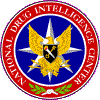
|
National
Drug Intelligence Center New England High Intensity Drug Trafficking Area Drug Market Analysis June 2007 Drug Threat OverviewThe distribution and abuse of heroin, primarily SA heroin, and prescription narcotics such as OxyContin and Percocet (oxycodone) and Vicodin (hydrocodone) pose the greatest drug threat to the New England HIDTA region. Prescription narcotics abusers often switch to heroin because of the drug's lower cost and higher purity. The abuse of heroin, previously linked to chronic abusers in urban areas, has spread to rural communities and has increased among young adults and teenagers, who often initiate opiate abuse after abusing prescription narcotics. Various other illicit substances also pose a threat to the New England HIDTA region. Cocaine, mostly crack, is the primary drug of abuse in some areas of the region, particularly inner-city neighborhoods in Hartford, Bridgeport, Providence, and Boston. Crack availability has expanded in Maine and New Hampshire as well, largely because African American and Hispanic criminal groups and street gangs from Massachusetts have increased distribution in those areas. Marijuana is widely abused throughout the area, with most abusers preferring high-potency marijuana from Canada over commercial-grade marijuana from Mexico. Methamphetamine poses a relatively low drug threat to the New England HIDTA region; most abuse is concentrated in the gay male community in Boston. Methamphetamine production is low in the area, conducted mostly by Caucasian abusers who produce personal use quantities of the drug. The threat posed to the area by other dangerous drugs (ODDs) varies; MDMA distribution and abuse are increasing, while the abuse of LSD (lysergic acid diethylamide), PCP (phencyclidine), and psilocybin mushrooms is stable at low levels. |